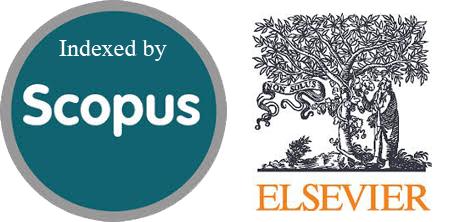استخدام موضعي للمستخلص الكركم المرتكزعلى كليسرول يخفف قرحة القدم السكري ؛ تقرير حالة
DOI:
https://doi.org/10.54133/ajms.v8i1.1649الكلمات المفتاحية:
Amputation، Curcumin، Diabetic complications، Ulcer، Wound healingالملخص
تعتبر قرحة القدم السكري من المضاعفات الخطيرة التي تصيب حوالي 34% من المرضى السكري، ويؤدي حوالي ٢٠% من الحالات إلى بتر الأطراف، إضافة إلى مضاعفة خطر الوفاة على مدى عشر سنوات. على الرغم من نجاح بعض العلاجات المتطورة ، ألا أن هناك حاجة إلى بدائل فعّالة. يمتلك مركب الكركمين في المستخلص الكركم خصائص مضادة للميكروبات، ومضادة للأكسدة و للالتهابات مما قد يساهم في تسريع التئام الجروح. يُعرض هنا حالة لمريض يبلغ من العمر ٤١ عامًا، يعاني من تقرح القدم السكري مقاومة للمضادات الحيوية منذ شهرين، وله تاريخ مرضي حوالي ١٢ عامًا مع المرض السكري من النوع الثاني دون سيطرة كافية على نسبة الكلوكوزفي الدم. لم تستجب القرحة للعلاجات التقليدية، بما في ذلك المضادات الحيوية. بعد تنظيف الجرح بالمحلول النورمال سلاين، تم استخدام تركيبة موضعية متكون من المستخلص الكركم والكليسرول يوميًا. تم إعداد التركيبة عبر خلط ١:١ غرام/مل من مسحوق مستخلص الكركم مع الكليسرول. أظهر العلاج تحسنًا ملحوظًا في حالة الجرح خلال ٣٥ يومًا؛ حيث انخفض الإفراز والاحمرار خلال الاسبوع الاول، وتم القضاء على الالتهابات، وشُفي الجرح بشكل كبير بحلول اليوم الخامس والثلاثين. يوضح هذا التقرير أن المستخلص الكركم قد يكون علاجًا مساعدًا ذو كلفة منخفضة للتقرحات القدم السكري المزمنة. لكن، هناك حاجة إلى مزيد من الأبحاث لتحسين تركيبة الكركمين لتعزيز امتصاصه الدوائي وتوضيح آليات التئام الجروح، مما يعزز شفاء المرضى السكري ويقلل من المضاعفات المرتبطة بها.
التنزيلات
المراجع
Armstrong DG, Boulton AJM, Bus SA. Diabetic foot ulcers and their recurrence. N Engl J Med. 2017;376(24):2367-2375. doi: 10.1056/NEJMra1615439. DOI: https://doi.org/10.1056/NEJMra1615439
McDermott K, Fang M, Boulton AJM, Selvin E, Hicks CW. Etiology, epidemiology, and disparities in the burden of diabetic foot ulcers. Diabetes Care. 2023;46(1):209-221. doi: 10.2337/dci22-0043. DOI: https://doi.org/10.2337/dci22-0043
Lipsky BA, Berendt AR, Cornia PB, Pile JC, Peters EJ, Armstrong DG, et al. 2012 Infectious Diseases Society of America clinical practice guideline for the diagnosis and treatment of diabetic foot infections. Clin Infect Dis. 2012;54(12):e132-173. doi: 10.1093/cid/cis346. DOI: https://doi.org/10.1093/cid/cis346
Azam MS, Azad MH, Arsalan M, Malik A, Ashraf R, Javed H. Efficacy of platelet-rich plasma in the treatment of diabetic foot ulcer. Cureus. 2024. doi: 10.7759/cureus.60934. DOI: https://doi.org/10.7759/cureus.60934
Hajimohammadi K, Makhdoomi K, Zabihi RE, Parizad N. NPWT: a gate of hope for patients with diabetic foot ulcers. Br J Nurs. 2019;28(12):S6-S9. doi: 10.12968/bjon.2019.28.12.S6. DOI: https://doi.org/10.12968/bjon.2019.28.12.S6
Parizad N, Hajimohammadi K, Goli R. Surgical debridement, maggot therapy, negative pressure wound therapy, and silver foam dressing revive hope for patients with diabetic foot ulcer: A case report. Int J Surg Case Rep. 2021;82:105931. doi: 10.1016/j.ijscr.2021.105931. DOI: https://doi.org/10.1016/j.ijscr.2021.105931
Fuloria S, Mehta J, Chandel A, Sekar M, Rani NNIM, Begum MY, et al. A comprehensive review on the therapeutic potential of Curcuma longa Linn. in relation to its major active constituent curcumin. Front Pharmacol. 2022;13:820806. doi: 10.3389/fphar.2022.820806. DOI: https://doi.org/10.3389/fphar.2022.820806
Mustafa HH, Ali OJ, Abdulrahman HA, Hassan SMA, Salih LF, Faraj SS. Enhancing cutaneous wound healing: The therapeutic potential of topical curcumin extract in a rat model. Egypt J Vet Sci. 2025;56(7):1425-1432. doi: 10.21608/ejvs.2024.279936.1966. DOI: https://doi.org/10.21608/ejvs.2024.279936.1966
Cao M, Duan Z, Wang X, Gong P, Zhang L, Ruan B. Curcumin promotes diabetic foot ulcer wound healing by inhibiting miR-152-3p and activating the FBN1/TGF-β pathway. Mol Biotechnol. 2024;66(5):1266-1278. doi: 10.1007/s12033-023-01027-z. DOI: https://doi.org/10.1007/s12033-023-01027-z
Asharib Arshad M, Arshad S, Arshad S, Abbas H. The quality of life in patients with diabetic foot ulcers. J Diabetes Metab. 2020;11(2). doi: 10.35248/2155-6156.20.11.e101. DOI: https://doi.org/10.35248/2155-6156.20.11.e101
Dhobale SA, Dhobale AD, Thanage AR, Tambe AV, Gaikwad Shital D. Formulation and evaluation of turmeric gel. Int J Adv Res Sci Commun Technol. 2022:644-647. doi: 10.48175/IJARSCT-4876. DOI: https://doi.org/10.48175/IJARSCT-4876
Ajay R, Shyam A, Kavitha PN. A study on preparation and evaluation of herbal peel off face mask. Int J Multidiscip Res. 2023;5(5):6812. doi: 10.36948/ijfmr.2023.v05i05.6812. DOI: https://doi.org/10.36948/ijfmr.2023.v05i05.6812
Estefania KV, Silalahi J, Sumaiyah S, Satria D. Formulation and evaluation of cream turmeric extract peparations from turmeric rhizomes (Curcuma domestica Val.). Indonesian J Pharm Clin Res. 2022;5(1):01-09. doi: 10.32734/idjpcr.v5i1.6479. DOI: https://doi.org/10.32734/idjpcr.v5i1.6479
Raja JM, Maturana MA, Kayali S, Khouzam A, Efeovbokhan N. Diabetic foot ulcer: A comprehensive review of pathophysiology and management modalities. World J Clin Cases. 2023;11(8):1684-1693. doi: 10.12998/wjcc.v11.i8.1684. DOI: https://doi.org/10.12998/wjcc.v11.i8.1684
Deng H, Li B, Shen Q, Zhang C, Kuang L, Chen R, et al. Mechanisms of diabetic foot ulceration: A review. J Diabetes. 2023;15(4):299-312. doi: 10.1111/1753-0407.13372. DOI: https://doi.org/10.1111/1753-0407.13372
Rapti E, Adamantidi T, Efthymiopoulos P, Kyzas GZ, Tsoupras A. Potential applications of the anti-inflammatory, antithrombotic and antioxidant health-promoting properties of curcumin: A critical review. Nutraceuticals. 2024;4(4):562-595. doi: 10.3390/nutraceuticals4040031. DOI: https://doi.org/10.3390/nutraceuticals4040031
Li Y, Zhao S, Der Merwe LV, Dai W, Lin C. Efficacy of curcumin for wound repair in diabetic Rats/Mice: A systematic review and meta-analysis of preclinical studies. Curr Pharm Des. 2022;28(3):187-197. doi: 10.2174/1381612827666210617122026. DOI: https://doi.org/10.2174/1381612827666210617122026
Agharazi M, Gazerani S, Huntington MK. Topical turmeric ointment in the treatment of diabetic foot ulcers: A randomized, placebo-controlled study. Int J Low Extrem Wounds. 2022:15347346221143222. doi: 10.1177/15347346221143222. DOI: https://doi.org/10.1177/15347346221143222
Begum F, Keni R, Ahuja TN, Beegum F, Nandakumar K, Shenoy RR. Notch signaling: A possible therapeutic target and its role in diabetic foot ulcers. Diabetes Metab Syndr Clin Res Rev. 2022;16(7):102542. doi: 10.1016/j.dsx.2022.102542. DOI: https://doi.org/10.1016/j.dsx.2022.102542
Kuai L, Zhang JT, Deng Y, Xu S, Xu XZ, Wu MF, et al. Sheng-ji Hua-yu formula promotes diabetic wound healing of re-epithelization via Activin/Follistatin regulation. BMC Complement Altern Med. 2018;18(1):32. doi: 10.1186/s12906-017-2074-8. DOI: https://doi.org/10.1186/s12906-017-2074-8
Yadav JP, Verma A, Pathak P, Dwivedi AR, Singh AK, Kumar P, et al. Phytoconstituents as modulators of NF-κB signalling: Investigating therapeutic potential for diabetic wound healing. Biomed Pharmacother. 2024;177:117058. doi: 10.1016/j.biopha.2024.117058. DOI: https://doi.org/10.1016/j.biopha.2024.117058

التنزيلات
منشور
كيفية الاقتباس
إصدار
القسم
الرخصة
الحقوق الفكرية (c) 2025 Al-Rafidain Journal of Medical Sciences

هذا العمل مرخص بموجب Creative Commons Attribution-NonCommercial-ShareAlike 4.0 International License.
Published by Al-Rafidain University College. This is an open access journal issued under the CC BY-NC-SA 4.0 license (https://creativecommons.org/licenses/by-nc-sa/4.0/).










